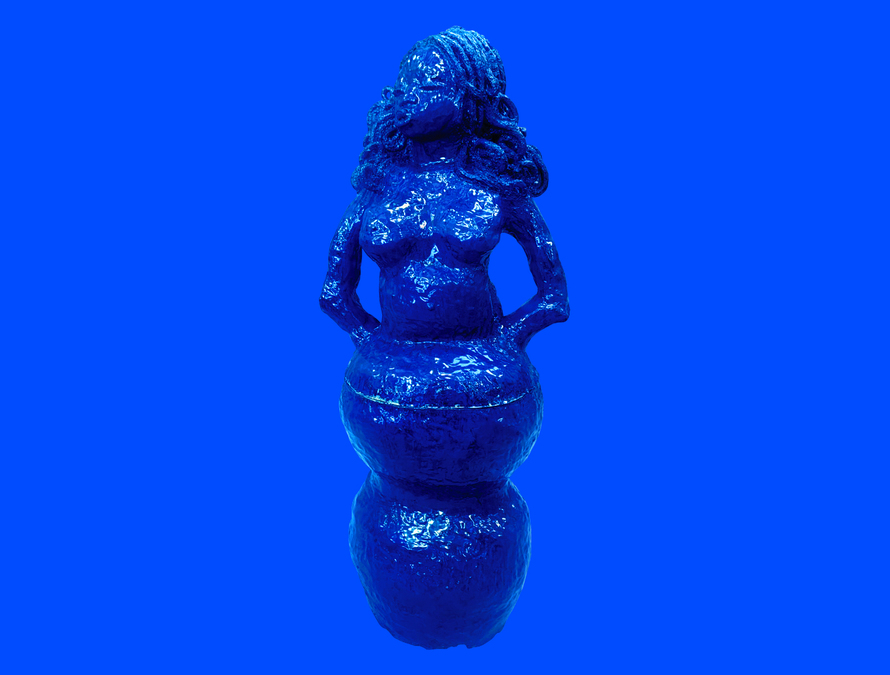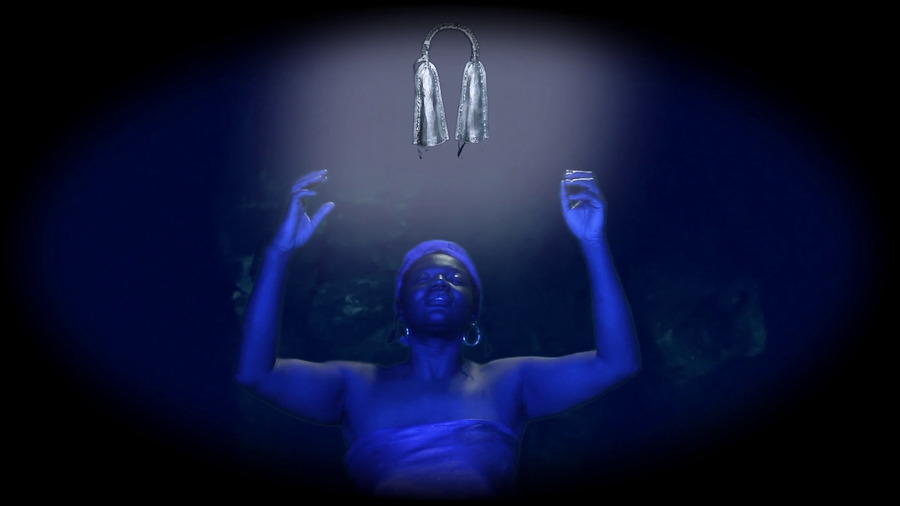The Glasgow International artists tackling Scotland's colonial past
At this year’s Glasgow International, many artists focused on Scotland’s colonial project and its historical and contemporary repercussions – the continued systematic erasure of Black stories and voices being one of them
A gurgling wall-based sculpture vaguely reminiscent of a fountain spouts rum through a tube, glazing a large sheet of steel, infusing the air with the sweet scent of rum. Perhaps a re-imagining of the public fountains that mark many of Britain’s civic spaces, Untitled (Falls of Clyde, 1492, 1707-) acts almost like stark anti-monument to their archaic excess, while also noting the invention of rum in the colonial Caribbean, its creation and transportation facilitated by waterways. Camara Taylor’s exhibition [mouthfeel] at Tramway examines what the artist describes as Scotland’s "entanglement with racial capitalism" – chiefly, how Scotland’s involvement in the transatlantic chattel slavery and its wider colonial project has shaped contemporary Scotland. The exhibition brings together years of research (which is still very much ongoing) into historical traces that register Black presences in Scotland.
The bubbling rum punctuates a beautiful but mournful audio work by 皚桐 (Ai Túng) titled river psalm, which ebbs and meanders around you in the gallery space. The references that crop up in the exhibition are broad; the widening of the River Clyde to accommodate larger cargo ships to facilitate colonial trade; an image of a Black family in the Gorbals in the 1930s, annotated with text; a giclee print makes reference to the 2019 drowning of a still-unnamed Black man who was chased into the River Clyde by the police. Indexing, reimagining and reworking are deployed readily throughout this exhibition; notes accompanying photographs are scribbled out; photographic materials are worked into and over; the rum is funnelled through a tube, recollected and recycled.

fir gorma (2024) by Josie KO and Kialy Tihngang. Image courtesy of the artists
Meanwhile, at the festival’s Florence Street venue, Josie KO and Kialy Tihngang’s sculptural and moving image installation also examines the presences and absences of Black people in Scotland. Titled fir gorma (which translates as ‘blue men’ from old Irish), the exhibition shares a name with an ongoing research project developed by KO, which focuses on the presence of Black people in Scotland in the pre-colonial era; in particular, Black people from North Africa enslaved by the Vikings in the 9th century and taken to Scotland and Ireland. KO’s historical research subverts and resists the myth that the presence of people of colour in Scotland is a 20th-century phenomenon.
KO invited Tihngang to create an installation together in response to fir gorma, which Tihngang describes as "such an unfixed, uncharted piece of history" – this both allowed for conversations to form and grow, but also allowed Tihngang to "expand [her] concurrent research on Black Scottish identity, Blackness in high fantasy, precolonial African traditions, and Blackness in pop culture." KO initially had doubts about pursuing the research, she tells me: "At first I felt so insecure about researching such a complex and unknown history – I am definitely no historian – but now I have felt confident that as an artist I can share my research and present it in an accessible way, showing my perspective, which as a Black woman, doesn’t usually get such a platform."
KO’s epic papier mâché sculpture of a woman is painted in oceanic blues, towering up to the first floor of the building, emblazoned with words of solidarity with the Palestinian people. Titled Monument to fir gorma, the artist has created a cavernous, kaleidoscopic space inside the sculpture – ceramic busts greet visitors, one blowing a kiss, another sticking her tongue out, water splashing playfully from a fountain. Emerging from the sparkling blue tunnels KO has constructed, Tihngang’s film is projected on to a shapely oval screen. Neyinka and the Silver Gong is similarly playful and features the artist playing a multitude of characters in an extended trailer for a fantasy blockbuster revolving around the fir gorma. The film subverts traditional tropes and representations of Scotland as white, homogenous and virtuous, but is also incredibly poignant in its exploration of displacement, movement and longing.

Still from Neyinka and the Silver Gong (2024) by Kialy Tihngang
KO says her imagining of fir gorma was "very other-worldly, so I wanted the whole installation to feel like you were entering this made-up fir gorma world… this time Kialy’s specific fir gorma film world. I was really proud of how effectively and harmoniously this constructed idea worked in the end. Through osmosis of working together the curves of Kialy’s screen was compatible with the curve of my big construction and the curves of my ceramic pieces." Tihngang agrees: "I think the synergy of the exhibition is testament to the strength of the conversations that Josie and I had at the beginning of the project, where the final outcomes weren’t fixed yet, but the potential energy of dreaming was so strong."
Erasure is certainly still on my mind when I visit the Sandra George exhibition upstairs at Florence Street. Curated by The Glasgow School of Art Exhibitions, the photographs by the Black Scottish community worker and artist Sandra George are real treasures, snapshots of the working class and immigrant communities she lived with taken over several decades. George sadly passed away in 2013, her work having never been shown in Scotland, but this collaboration with Craigmillar Now (who hold George’s archive) brings her work to life, enhanced and reframed through a commission by Christian Noelle Charles, who created several portraits of George and curated a discussion and community event held in her honour during the festival.
Camara Taylor: [mouthfeel], Tramway, Glasgow, until 18 Aug
Glasgow International is scheduled to return in summer 2026
